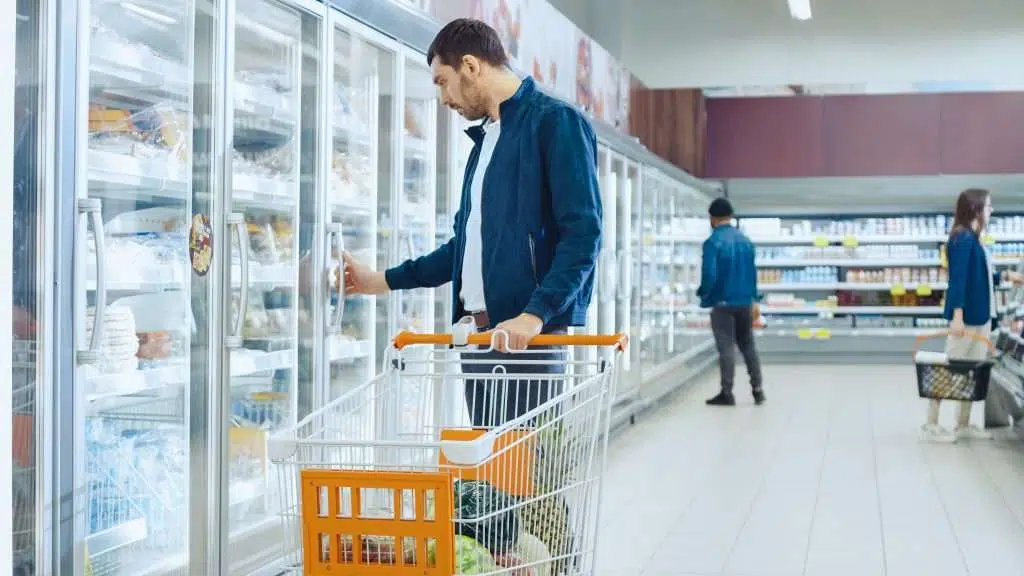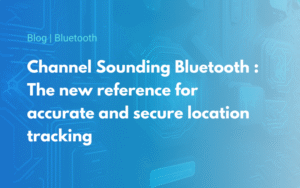How to secure the tracking of the cold chain during transport?
Reading time
Level

Temperature monitoring is a major issue for carriers who need to invest in high-performance tracking solutions. But what does the regulation say?
For many years, goods transport has been growing steadily, despite political, economic and health uncertainties. Industrialists in the sector are optimistic about the growth of the sector and are preparing to face new challenges. To meet these challenges, they are preparing to make numerous investments, particularly in the IoT and Industry 4.0, which should represent more than 25% of future investments. Indeed, the digitalization and automation of processes are underway in the transport sector, which is in full digital transition. The health crisis of 2020 and the development of vaccines against COVID-19 have contributed to accelerating this transition by forcing transporters to further secure the cold chain to ensure the conservation of vaccines throughout transport.
In this article, we propose you to take stock of the cold chain tracking regulations and to focus on the transport and storage of pharmaceutical and food products.
Respecting the cold chain: a major challenge during transport and storage
For the transport and logistics sectors, respect for the cold chain is a major issue, as it is closely linked to public health issues. When the cold chain is broken, it can quickly lead to the proliferation of bacteria and the degradation of foodstuffs. Unfortunately, transport is often the weakest link, as it is the most propitious time for cold chain breaks. Keeping goods at the right temperature throughout transportation is very complex and represents both health and economic challenges.
What does the regulation say?
The transport and distribution of heat-sensitive products are subject to different regulations that may vary according to the nature of the products, but also according to the country. European regulations require, among other things, the use of compliant recorders that must be regularly checked. These two aspects, linked to cold chain tracking, are the subject of standards called EN12830 for recorders and EN13486 for their verification.
Standard EN12830
The EN12830 standard applies to temperature recorders used by the various parties involved in the transport and storage of temperature-sensitive goods. This standard, dating from 1999, was revised in 2018 to define very precisely the safety and integrity requirements that must be met by the recordings from this equipment. It is the responsibility of the user of these recorders to ensure their compliance with this standard. The manufacturer of temperature sensors must be able to provide a certificate of conformity issued by an accredited standards laboratory. In France, laboratories must be COFRAC-accredited in order to be authorized to issue a certificate that complies with the law.
Standard EN13486
The EN13486 standard, for its part, deals with the periodic verification of temperature recorders. Like any measuring device, temperature sensors can lose accuracy after a few years. Verification of these is the responsibility of carriers and logisticians and although it is not mandatory, it is strongly recommended. It is important to note that this verification must be performed by a certified metrology laboratory. (COFRAC for France). The frequency of verification depends on the user’s requirements, but it is however recommended to have the sensors verified every year if they have been used during the period.
To learn more about these two standards, we invite you to read this article and if you want to know more about the calibration of temperature sensors, you can read this one.
Now that we have taken stock of the regulations, let’s focus on 2 sectors of activity that are highly regulated in terms of the transport and storage of foodstuffs: the pharmaceutical sector and the agri-food sector.
Pharmaceutical and food-processing sectors, highly regulated sectors in terms of temperature monitoring

TRANSPORT AND STORAGE OF PHARMACEUTICAL PRODUCTS
Health products and medicines are very expensive, fragile and need to be handled with the utmost care. Maintaining their temperature is essential to preserve their properties. For example, vaccines against COVID19 require extreme storage temperatures (up to -70° for some) and are, at the beginning of this year, the focus of all attention. According to the World Health Organization, nearly half of the vaccines distributed worldwide have to be thrown away, among other reasons, because of cold chain tracking problems. To meet this global challenge, transporters are equipping themselves with even more efficient temperature monitoring solutions to ensure the viability of vaccines.

TRANSPORT AND STORAGE OF FOOD PRODUCTS
As far as the food industry is concerned, the regulations are also very strict in terms of respect for the cold chain, whether for fresh, cold or frozen products. Temperature monitoring is an important issue to avoid possible health crises as well as food waste in case of a break in the cold chain. In France, more than 50% of foodstuffs are thrown away before they are even put on the shelves because of poor monitoring of the cold chain.
How to secure the transport and storage of heat-sensitive foodstuffs?
The health crisis of 2020 has prompted many players in the transport sector to equip themselves with innovative solutions to further secure the delivery and storage of vaccines against VIDOC19. The IoT’s manufacturers have developed new temperature sensors that can reach extra-wide measurement ranges to meet this urgent need.
But how do these cold chain tracking solutions work?
Today, wireless communication technologies such as Bluetooth Low Energy (BLE) make it possible to monitor transport and storage temperature remotely in a simple and fast way. Since BLE is an open protocol available on all smartphones, it simplifies the reporting of temperature data. Indeed, the carrier can retrieve the measurement history by scanning the Bluetooth sensor. This sensor can be positioned either in the truck trailer or in transport boxes. These wireless solutions allow to know in real time the storage temperature of the products and to be alerted by sms or email if a threshold is exceeded.
Some manufacturers of temperaturd sensors also offer products that can be quickly interfaced with the GPS units onboard truck fleets. The GPS tracker will then act as a gateway by sending information back to the client server via a 3G connection for example.
To conclude
For transport and logistics professionals, equipping themselves with temperature monitoring solutions has become essential to ensure the safety of goods. Nevertheless, it is important to pay particular attention to the choice of sensors to ensure that they comply with the standards and regulations in force.


